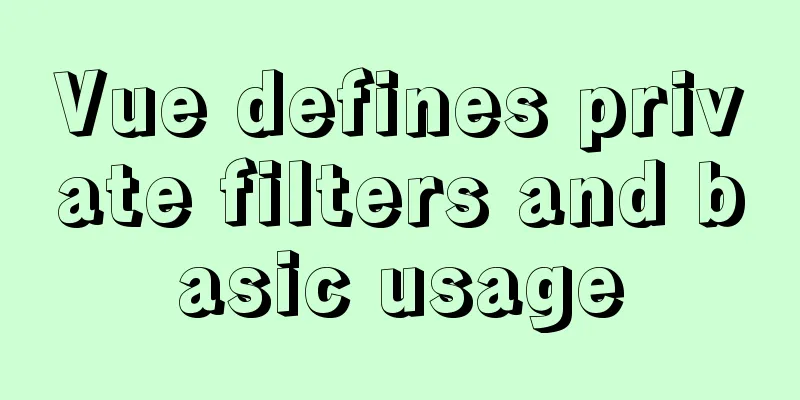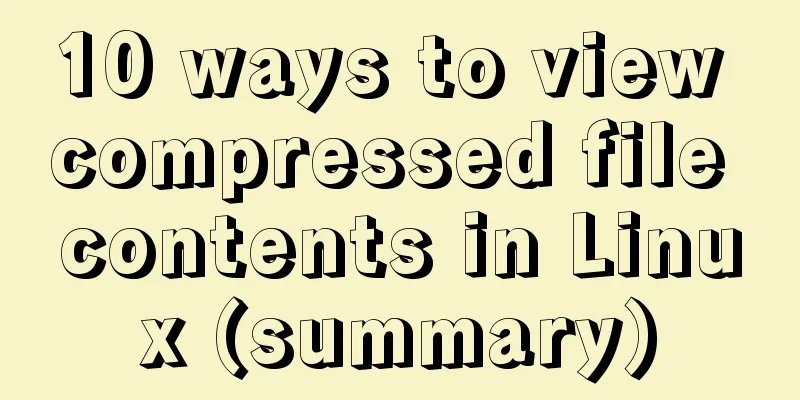Vue defines private filters and basic usage

Global Filters Click hereGlobal Filters The usage is the same as the global filter, but the definition is different The global filter is defined in script through Vue.filter Private filter definition method:
<script>
let vm = new Vue({
el:'#app',
data:{
},
filters: { // Private filters for this instance}
})
</script> In the vm instance, there are filters at the same level as data , which are used to define private filters for the current instance.
<div id="app">
<p>{{mes | addStr}}</p>
</div>
<script src="./js/vue.js"></script>
<script>
let vm = new Vue({
el:'#app',
data:{
mes: "I am a pessimistic person, and pessimistic people do pessimistic things"
},
filters: { // Private filter of the current instance addStr(data,str="happy"){
return data.replace(/pessimistic/g,str)
}
}
})
</script> The output is:  If there is a second instance in the page, vm2 , the filter in vm cannot be called. If there is a global filter and a private filter on the page, they can be called at the same time
<div id="app">
<p>{{mes | setStr | addStr}}</p>
</div>
<script src="./js/vue.js"></script>
<script>
Vue.filter('setStr',function(data){
return data+'I am a global filter'
})
let vm = new Vue({
el:'#app',
data:{
mes: "I am a pessimistic person, and pessimistic people do pessimistic things"
},
filters: { // Private filter of the current instance addStr(data,str="happy"){
return data.replace(/pessimistic/g,str)
}
}
})
</script> Output:  Summarize: When calling, we call the global one in front and the private one behind But the output result is that the private filter is processed first Therefore, when calling global and private filters at the same time, the calling rule is whichever is closer will be output first. First private then global This is the end of this article about vue definition of private filters and basic usage. For more relevant vue definition of private filters, please search 123WORDPRESS.COM's previous articles or continue to browse the following related articles. I hope everyone will support 123WORDPRESS.COM in the future! You may also be interested in:
|
<<: Complete guide to using iframe without borders or borders (practical experience summary)
>>: Nginx configuration to achieve multiple server load balancing
Recommend
How to configure static network connection in Linux
Configuring network connectivity for Linux system...
MySQL log system detailed information sharing
Anyone who has worked on a large system knows tha...
Teach you 10 ways to center horizontally and vertically in CSS (summary)
A must-have for interviews, you will definitely u...
Vue implements zoom in, zoom out and drag function
This article example shares the specific code of ...
Summary of the data storage structure of the nginx http module
Starting from this section, we will explain the i...
Five solutions to cross-browser problems (summary)
Brief review: Browser compatibility issues are of...
How to allow remote access to open ports in Linux
1. Modify the firewall configuration file # vi /e...
How to turn local variables into global variables in JavaScript
First we need to know the self-calling of the fun...
SQL implementation of LeetCode (183. Customers who have never placed an order)
[LeetCode] 183.Customers Who Never Order Suppose ...
MySQL beginners can say goodbye to the troubles of grouping and aggregation queries
Table of contents 1. Schematic diagram of group q...
MySQL slow query pt-query-digest analysis of slow query log
1. Introduction pt-query-digest is a tool for ana...
Win10+Ubuntu 20.04 LTS dual system installation (UEFI + GPT) (pictures and text, multiple pictures warning)
Win10 installation (skip if already installed) Fo...
CSS Sticky Footer Several Implementations
What is "Sticky Footer" The so-called &...
React Router V6 Updates
Table of contents ReactRouterV6 Changes 1. <Sw...
A Deep Dive into JavaScript Promises
Table of contents 1. What is Promise? 2. Why is t...




![MySQL dual-machine hot standby implementation solution [testable]](/upload/images/67cada729f1d5.webp)




